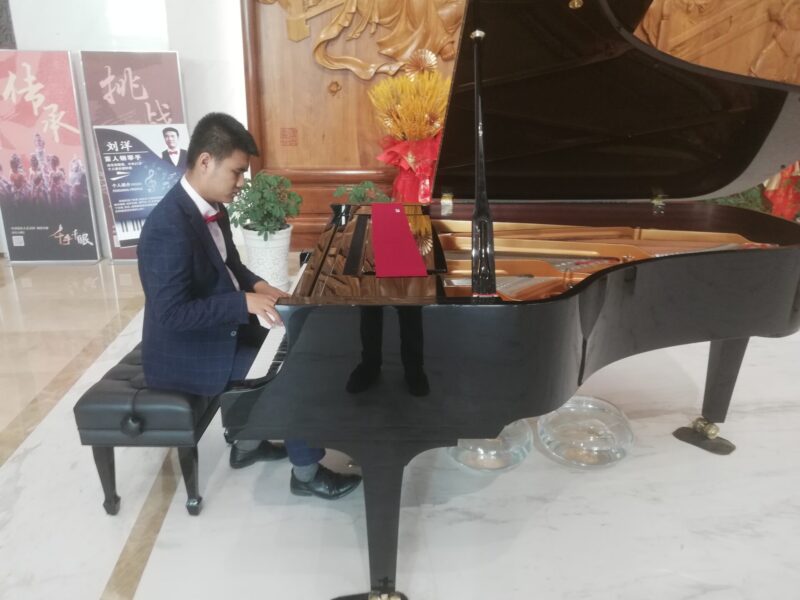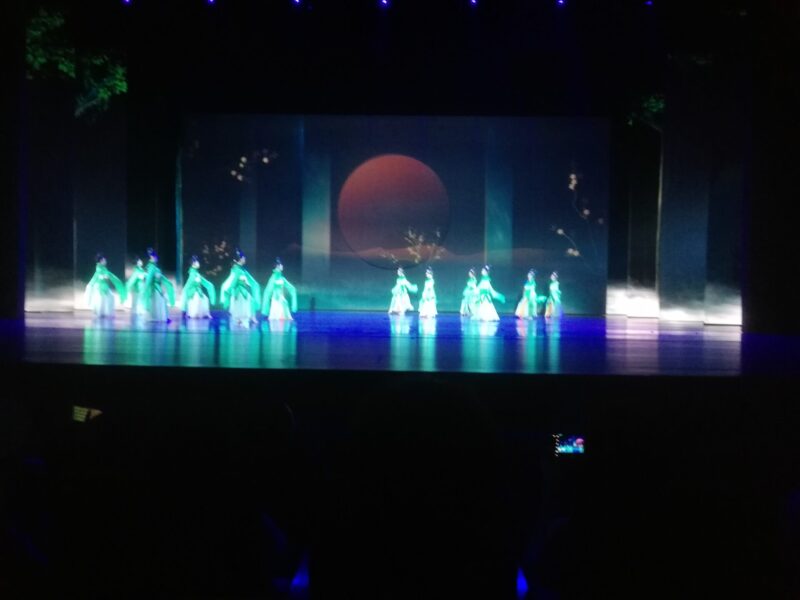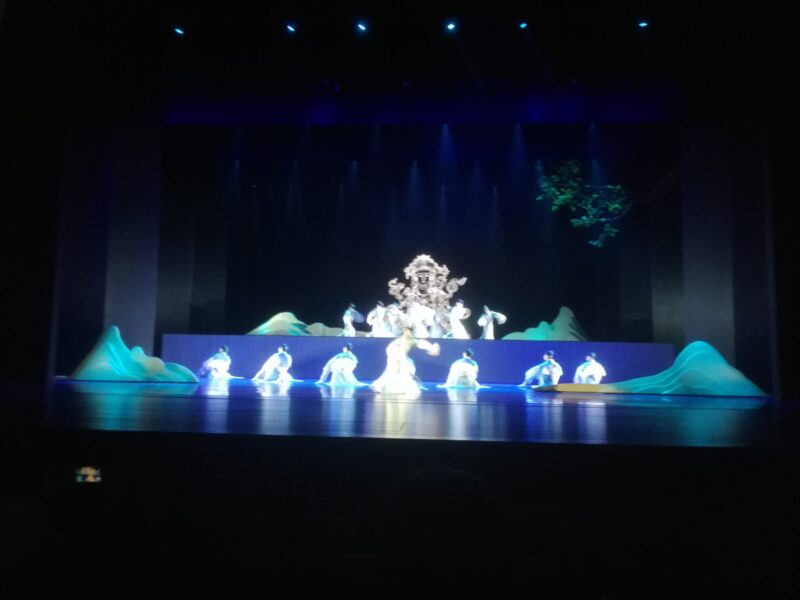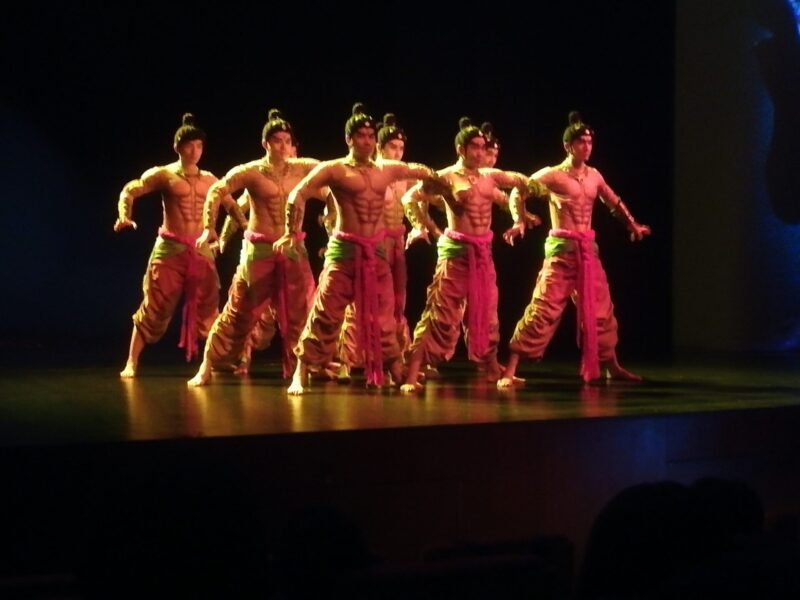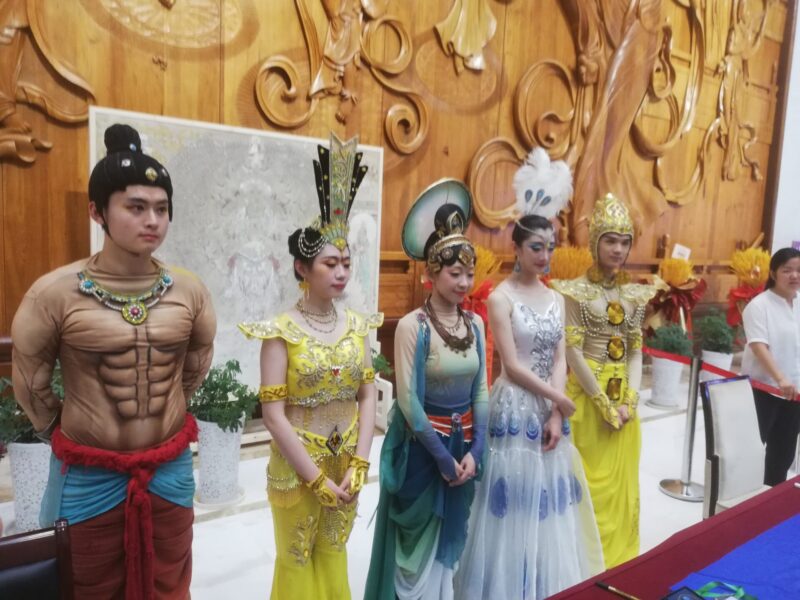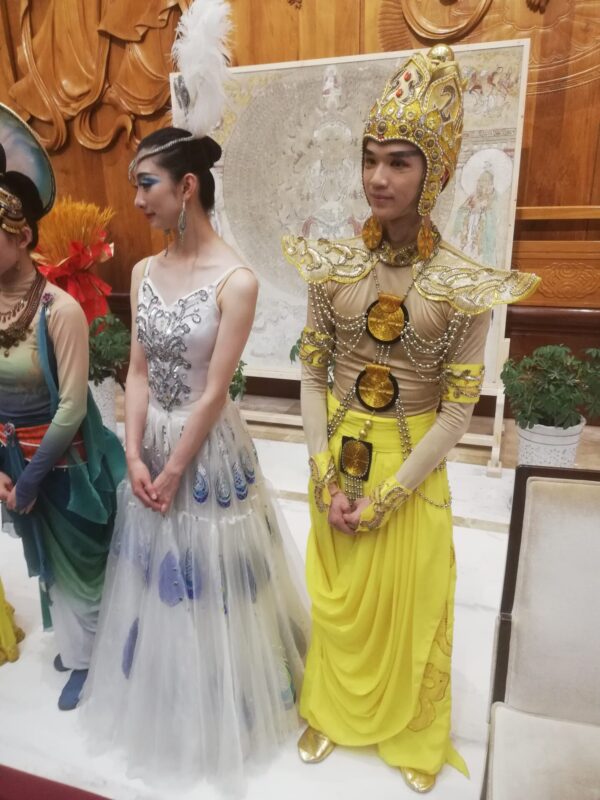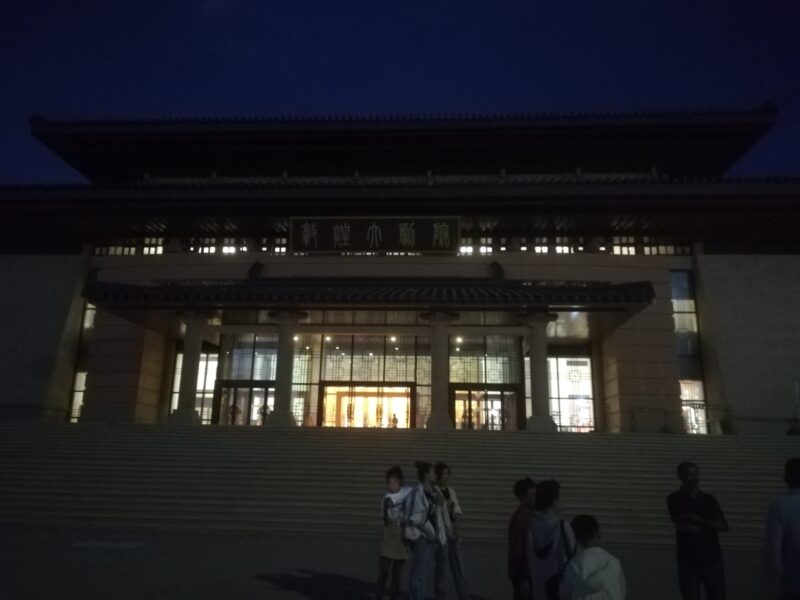We got a taxi to the Visitor Centre of the Mingsha Shan (Mingsha Mountain) with magnificent sand dunes hundreds of metres high, a temple and the Crescent Lake. The temple was visited by Cable and French as they set out from the small oasis village (now huge city) of Dunhwang on their way west through the sand dunes of the dreaded Desert of Lob. This is the Taklamakan Desert’s South Road which passes through Yarkand to Kashgar. Taklamakan means “place from which no living creature returns” and the Lob is the most desolate and inhospitable part where many people have lost their way in sandstorms when drifting sand covered the track and they died of thirst.
There was a bit of a row at the ticket office where a sign said in English that “seniors” were admitted free, as at Jiayuquan fort. The official claimed that this referred only to Chinese. So why put up a sign in English, we asked, and they reckoned that it was policy to put all signs in Chinese, English and Korean. So we had to pay.
We walked to the temple which is becoming increasingly commercialised and tried to walk round the lake but the roasting hot sand got into Jennifer’s sandals and burned her feet. So she sat at the west end of the temple compound while I walked up the rope ladder to the top of the dune, I was totally knackered when I got to the top but it was worth it.
We decided to eat about 6 pm but all the restaurants in snack street were closed, so we got a taxi over the long distance to the Grand Theatre in the pious hope that there would be a cafeteria. No such luck, but the ladies on the entrance suggested we walked perhaps 300 metres to the nearby exhibition centre. We had just set off when a little buggy thing drew up with a driver and one of the theatre ladies and we were urged to jump in the back. We were taken to a small stall which was selling fat pork sausages (with a sort of Chinese flavour to them) on sticks and small baked potatoes with sauces and herbs plus chunks of water melon. Just what we wanted. The buggy waited for us and took us back to the theatre.
The performance (and the theatre) was utterly spectacular. It was based on a story performed for over 1,000 years by groups of actors travelling up and down the Silk Road. The dancing was superb, the costumes were gorgeous and the music was beautiful. We loved every second of it and we agreed that the best bit was when a group of male actors performed feats of strength. I liked a bit where a girl in a yellow costume appeared to have 20 arms until eventually you discovered that 10 girls were standing behind each other. The experience was brilliant. A man making some money on the side offered to take us back to the hotel for 30 yuan and we gratefully accepted. There was a police roadblock on the way home and a policeman thrust a tube through the driver’s window. He spat into it and drove away. Apparently a simultaneous breathalyser.
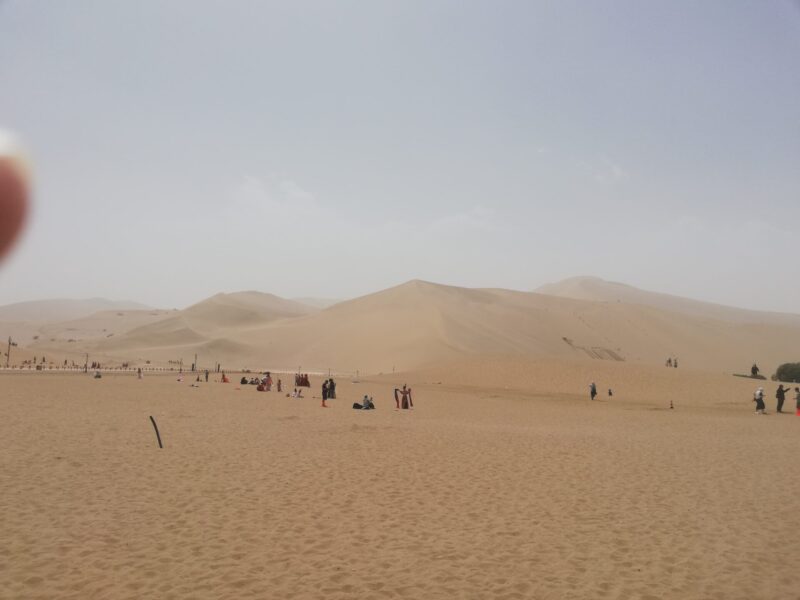

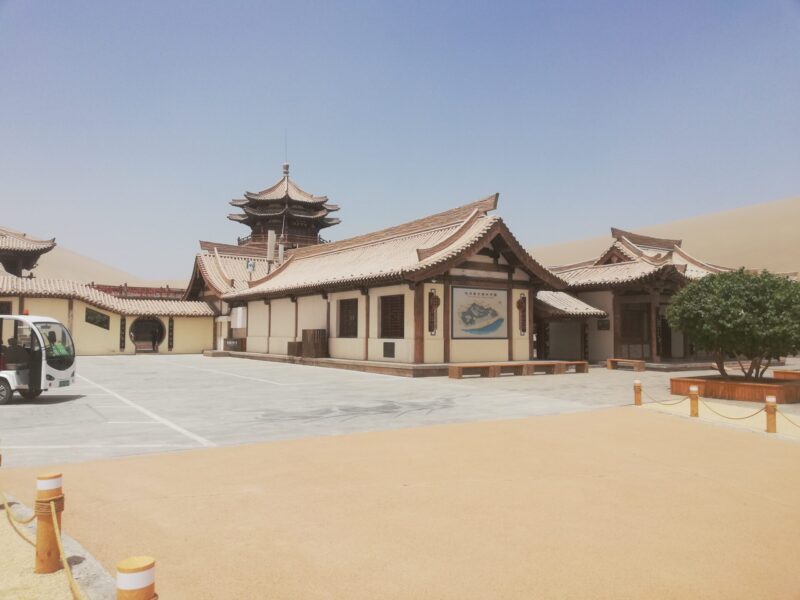
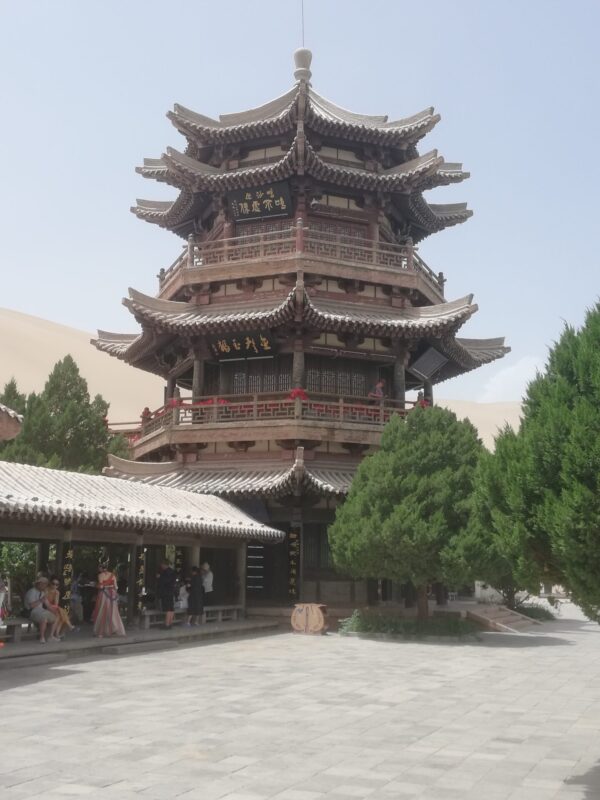
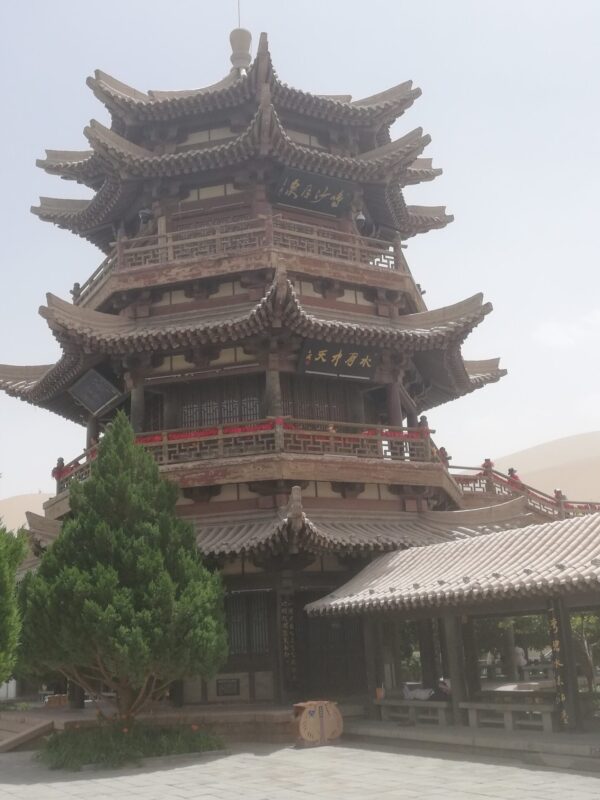
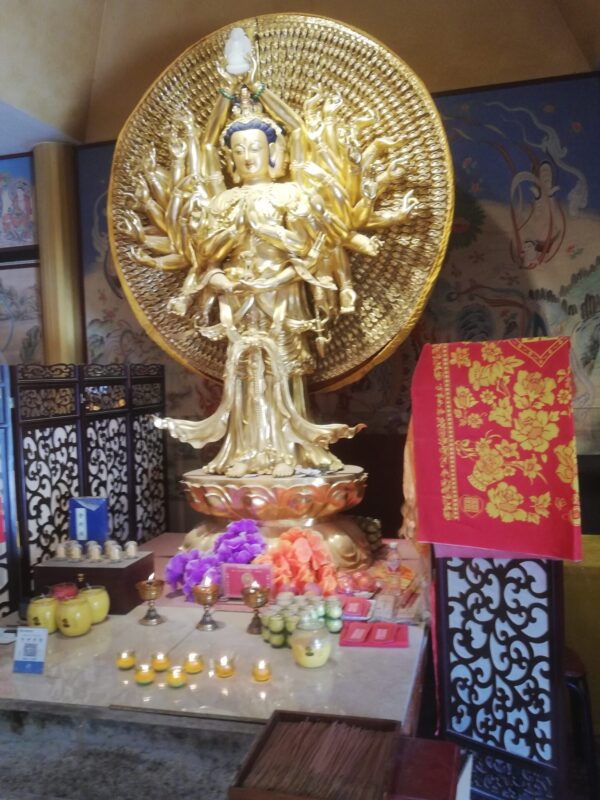
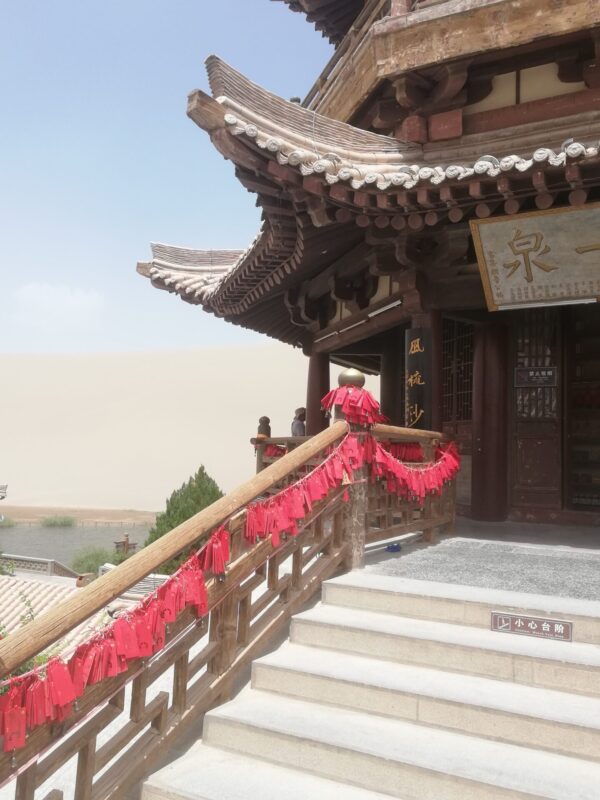
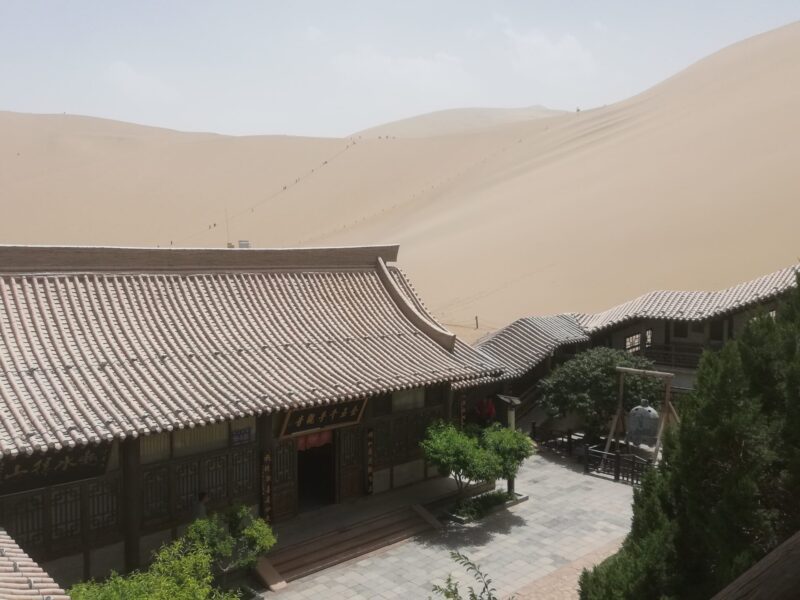
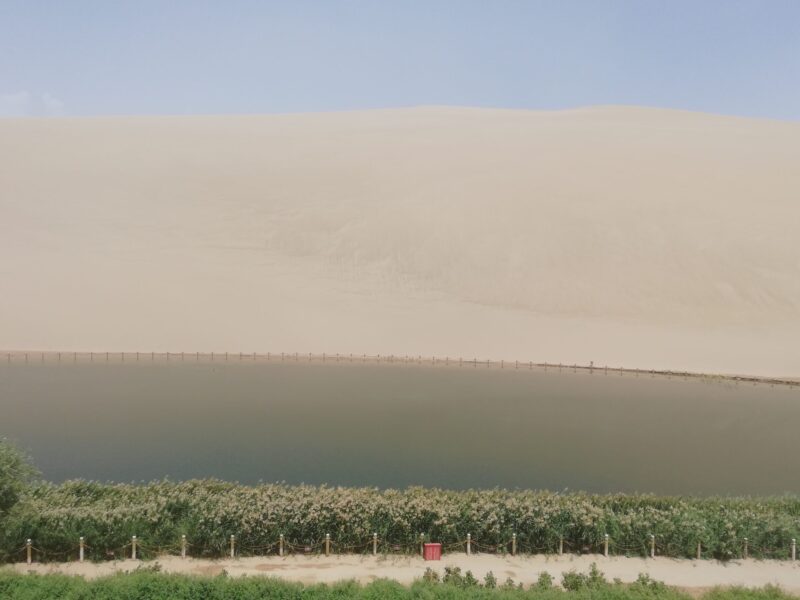
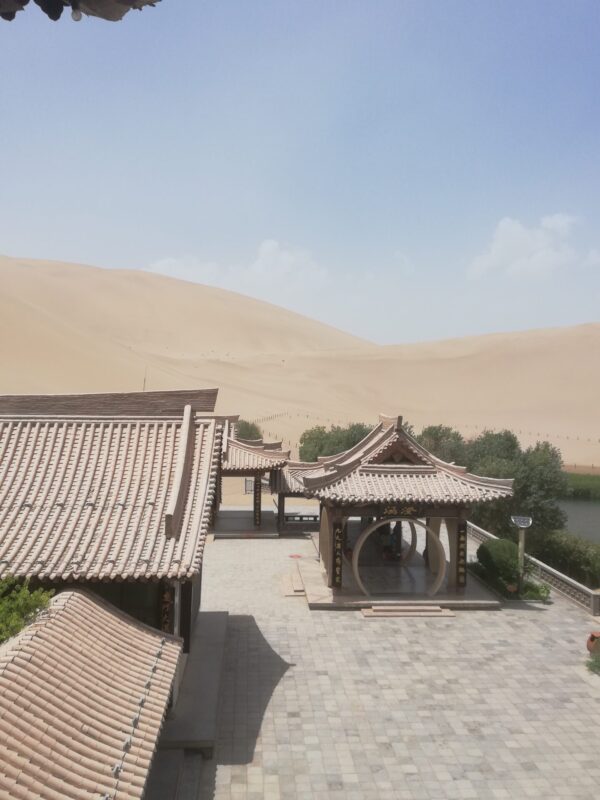
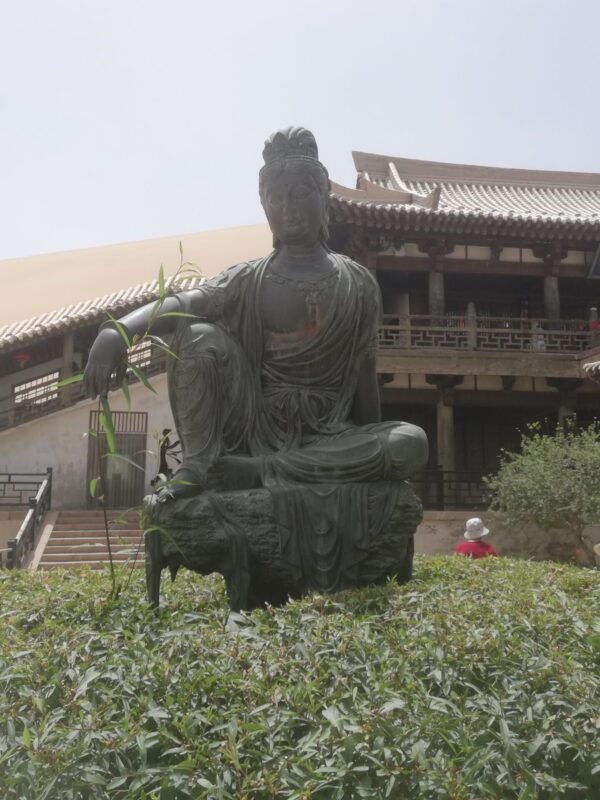
Tankaarl Akvalokitesvara (“watching the moon in water”) taken from one of the murals in the Mugao caves. Related to the Crescent Lake shaped like a moon in water. Supposed to protect the traveller from disasters. Erected 2010

Salix Matsudana Koidz. tree specific to north west China. ZuZongtang, an official of the late Qing dynasty, lead his Hunan army to recover Xinjiang, thy planted willows by the road, allegedly for 3,000 miles over the Yumenguan (“Jade Gate Pass) pass. This tree was planted in 1892
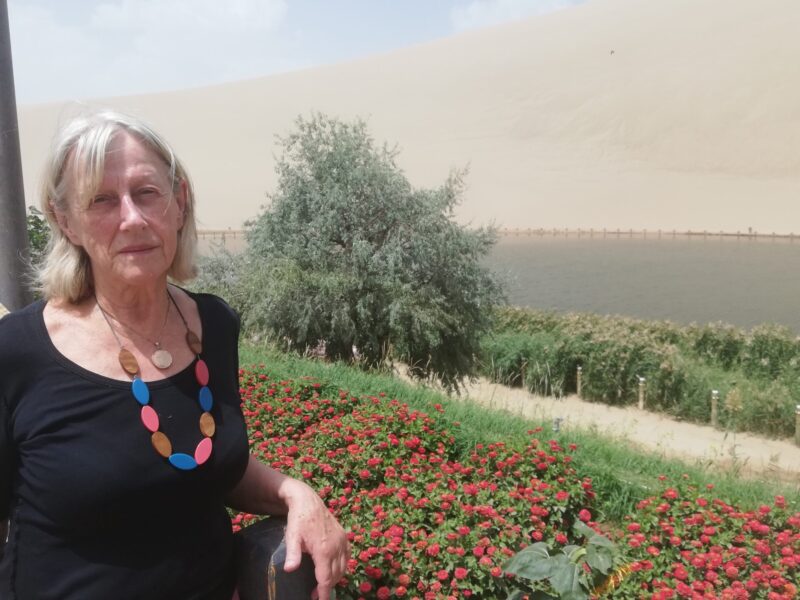
Crescent Lake
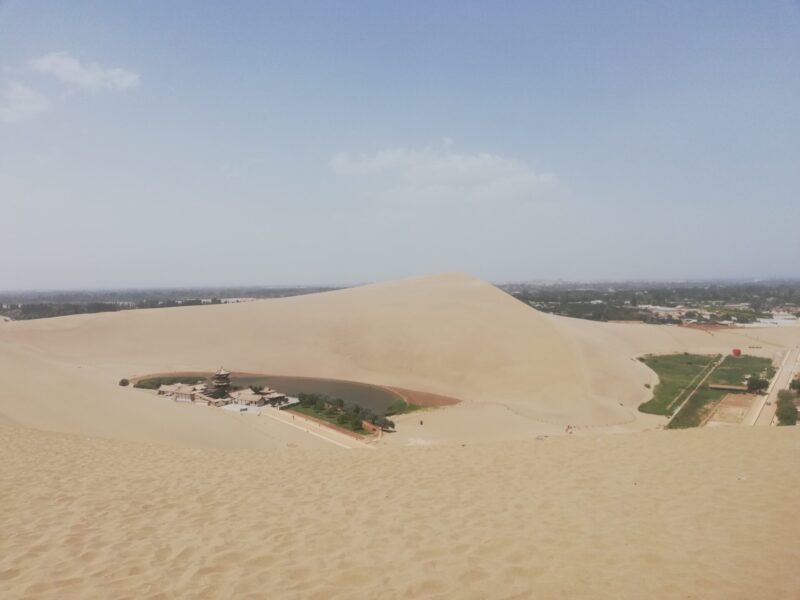
From the top of Mingsha Shan
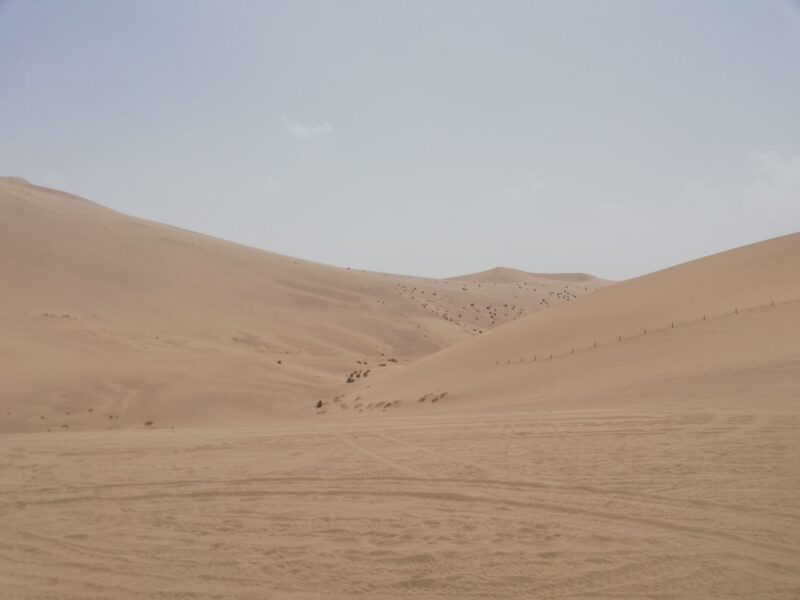
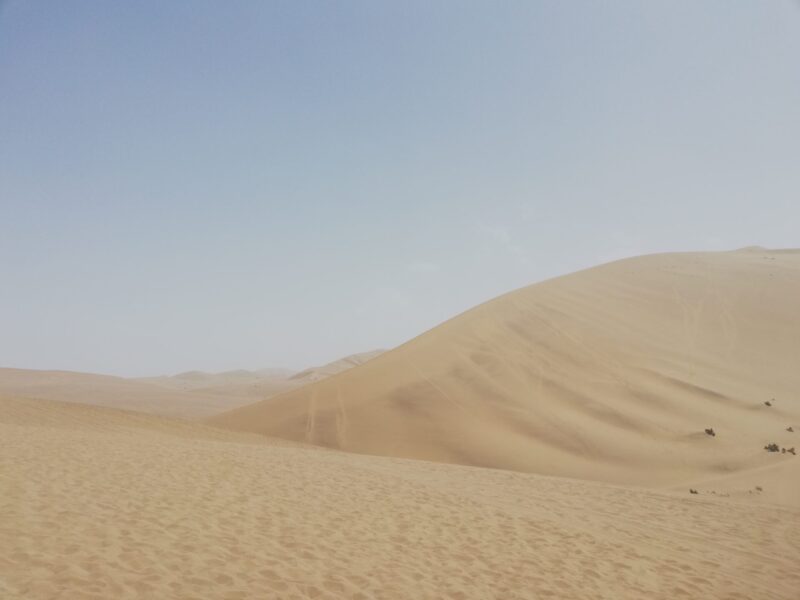
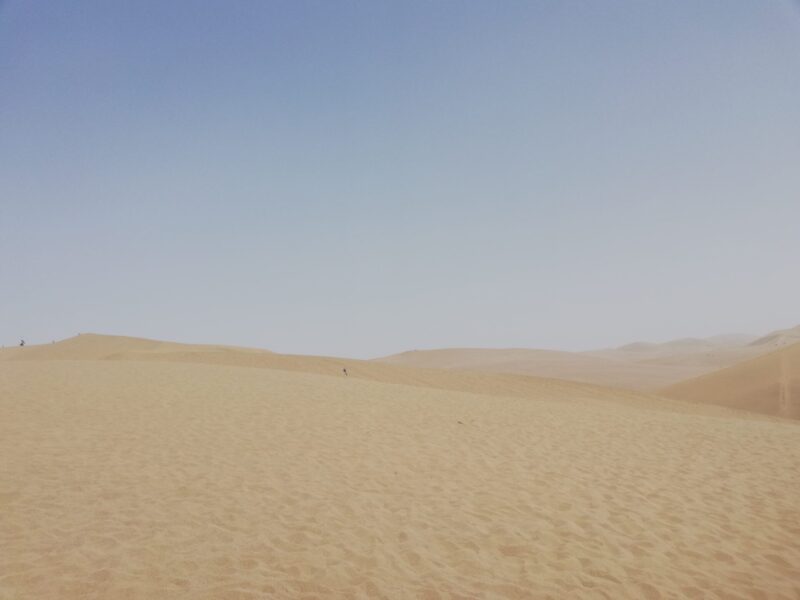
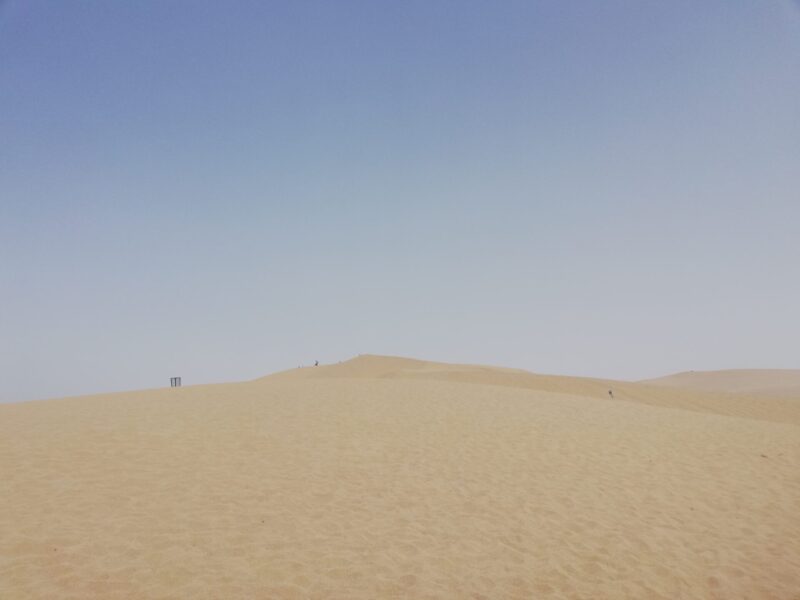
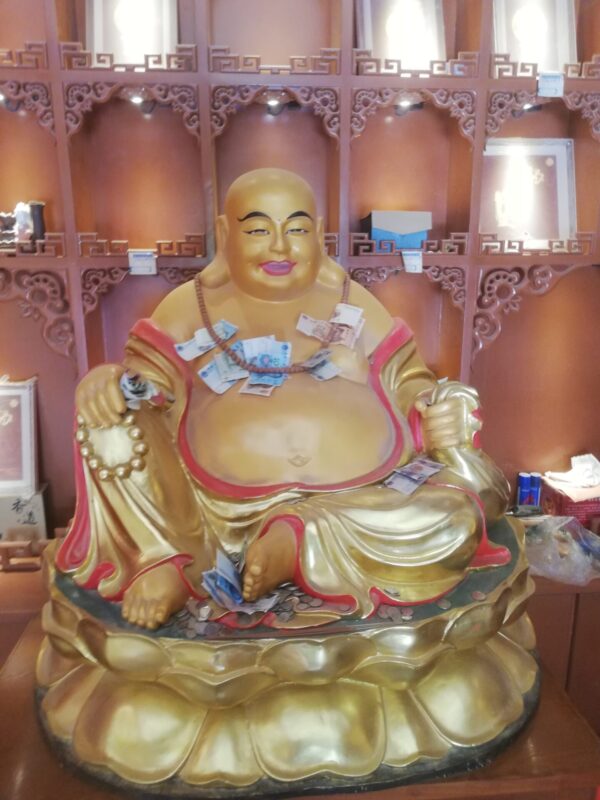

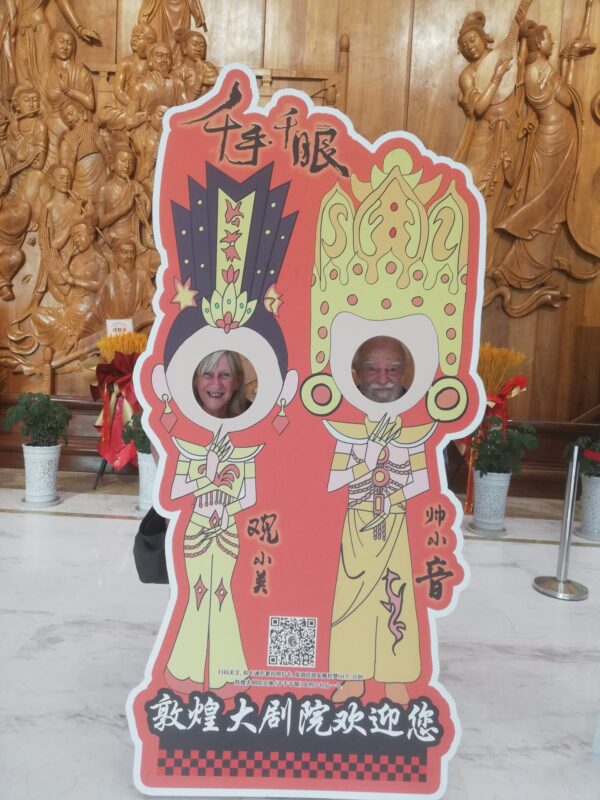
At the theatre. Two of the performers
